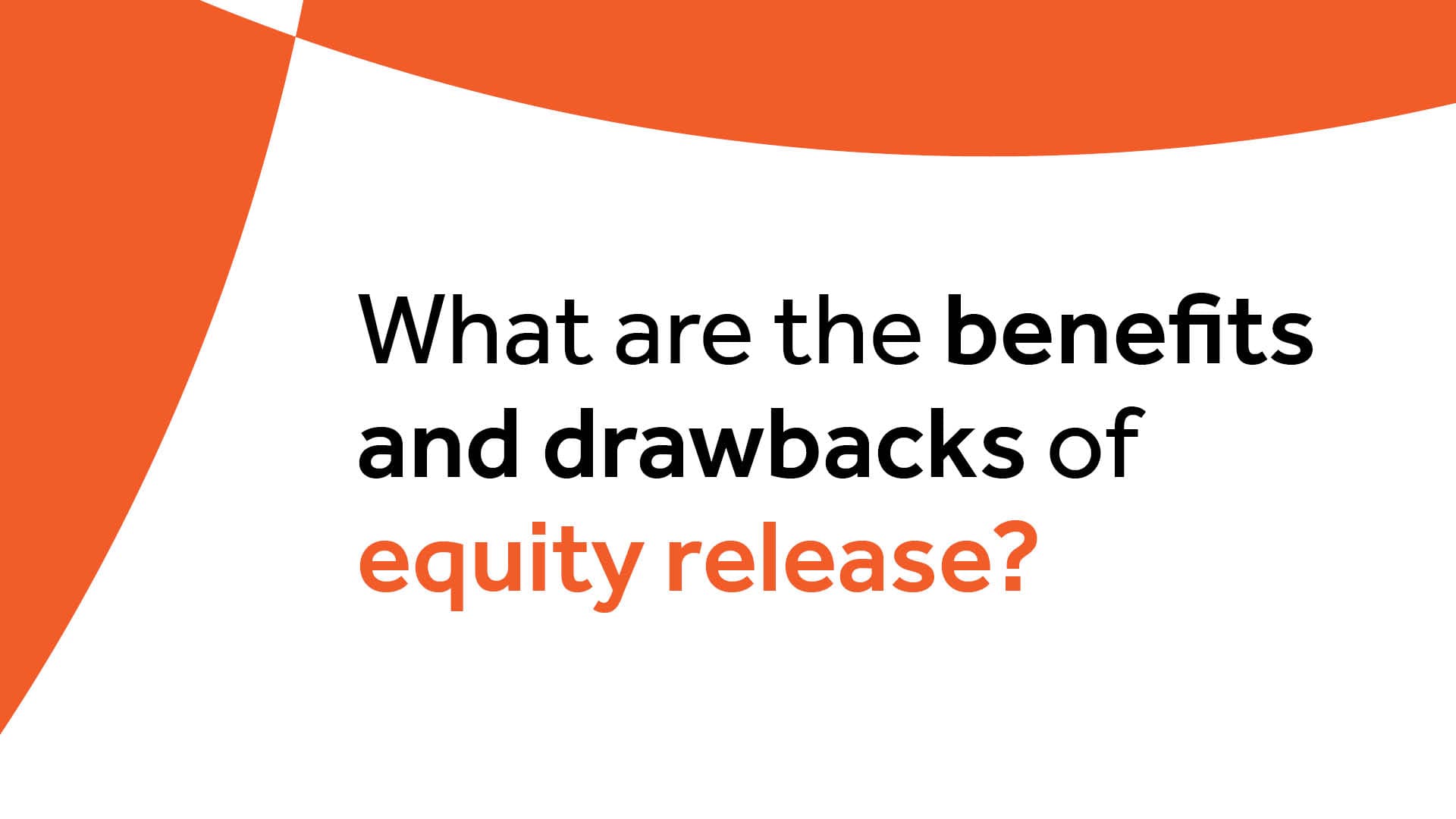We use some essential cookies to make our website work properly.
We’d also like to set additional cookies to help us improve our website, tailor marketing and provide a more personal experience.
Equity release is available to UK homeowners aged 55 or over. There are four different ways to unlock some of your home's value, tax-free, through equity release.

Watch our video to learn more about the benefits and drawbacks of equity release and see if it could be right for you.
All our equity release advice relates to lifetime mortgages - a loan secured against your home.
Video transcript (pdf)
Equity can be released in one of two ways via a lifetime mortgage. If you want the money all at once, then you could opt for a lump sum lifetime mortgage. If you want to take out an initial amount then release further funds as and when you need to, you might choose a drawdown lifetime mortgage.
✓ Lower interest rates
Lump sum lifetime mortgages sometimes come with a lower rate of interest compared to a drawdown lifetime mortgage, which can help reduce your total cost of borrowing.
✓ Interest rates don’t change
When you release the funds as a single lump sum, the money released is subject to the fixed interest rate at the time.
ⓘ May be more expensive
As compound interest will be rolled up on the money you’ve released, you will end up owing more if you take all your available cash in one go.
ⓘ Limited ability to release further funds
With a lump sum lifetime mortgage, you can’t release further funds unless you apply for a further advance. This is subject to the lender’s criteria, your age and your property’s value at the time of application. This also requires advice and is subject to fees.
✓ Release funds when needed
A drawdown lifetime mortgage offers more freedom than a lump sum plan, allowing you to release money when you need it.
✓ Save on interest
A drawdown lifetime mortgage also allows you to potentially save a considerable amount in interest over the lifetime of your plan, as the interest only accrues on the money you’ve released
ⓘ Your drawdown facility isn't guaranteed
Your lender may have the option to withdraw your drawdown facility.
ⓘ You don't know what interest rates will be like in the future
If you choose to make a drawdown, the funds will be subject to the prevailing, fixed interest rate at the time
Lifetime mortgage interest rates vary depending on your plan and circumstances. They're fixed for the life of the equity release plan.
Rates correct from 15th September 2025. Based on customer data from the last 60 days, apart from Key's lowest rate. Interest rate received and plan features are subject to eligibility. Ask for a personal illustration.
AER stands for Annual Equivalent Rate. It shows what the interest rate would be if the interest compounded each year.
APR stands for Annual Percentage Rate. It's the cost you pay each year to borrow money, including fees, expressed as a percentage.
Our equity release UK calculator will give you an idea of how much you could release. Your equity release adviser can give more information on interest rates.
We understand that everyone's needs are different. That's why we can personalise your lifetime mortgage to make sure it's right for you.
Key is a specialist, award-winning later life mortgage provider for the over 55s. We've helped over a million customers see if equity release was right for them. After we take the time to understand your needs, we'll recommend the most suitable later life option for you.
ⓘ Did you know...
Over the years, more than a million customers have benefitted from our expert advice, experience and professionalism from Key. We've been rated 'Excellent' on Trustpilot and you can check out the great things our customers have to say about the equity release plans we recommend.